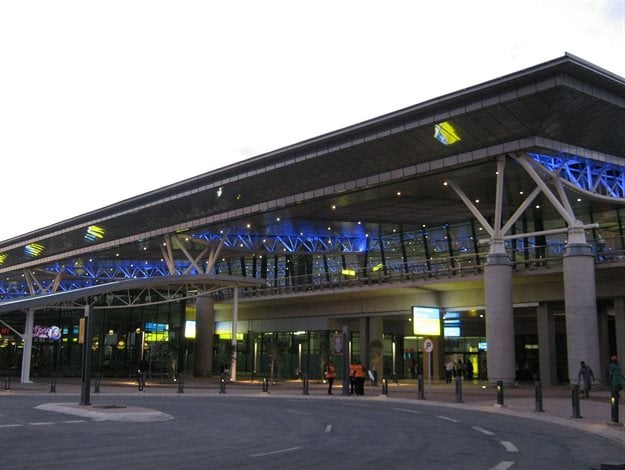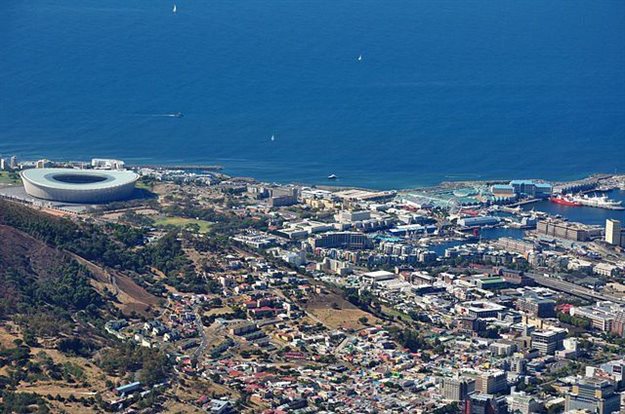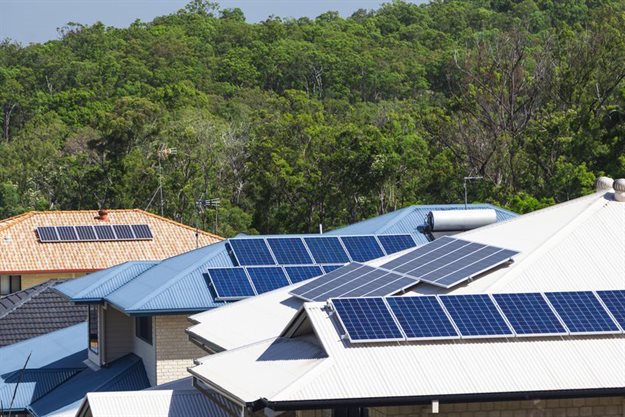






With household finances under pressure for the foreseeable future, the focus is likely to remain on affordability, value-for-money and cost saving – for example transport and utilities – for the bulk of the market.
While there will still be pockets of activity and price growth, the performance of the national housing market is likely to remain subdued.
Yet despite the knock-on effect of the drastic load shedding measures, there remain a number of positive factors underpinning the housing market, namely the demographic dividend of a young population – including first-time buyers - fuelling property purchases and rentals, relatively low interest rates, affordability returning as prices correct, and a strong appetite for lending from increasingly competitive financial institutions – with ooba’s loan to value rising to 88.4% in October which is the highest level since the data series began in 2007.
However, this will not translate into a meaningful recovery until economic growth and sentiment strengthens, and there is an improvement in incomes and employment opportunities.
One of the factors we believe could prove a boost for South Africa’s economy and ultimately even provide positives for the property market is tourism. Our beautiful country offers breathtakingly scenic landscapes and spectacular coastlines, vibrant cities and rural places of interest. With a reduced value of the rand, we could attract a significant increase in the number of visitors which would help build entrepreneurial attractions, accommodation and other opportunities within the tourism industry.

In KwaZulu-Natal, the introduction of direct flights between London and Durban by British Airways a year go has resulted in an 11% increase in international passenger numbers in the year to September 2019 compared to the same period last year, bolstering King Shaka International Airport’s status as South Africa’s fastest growing international air gateway.
Introduced this month (December 2019), and with a flight time of just 14.5 hours, the new direct flight between New York in the USA and Cape Town augurs well for tourism and foreign direct investment – as the USA has a huge luxury travel market - and according to Wesgro, has already resulted in an increase in forward bookings by US tourists to Cape Town for the summer season.
Coupled with this, the Cape Town Rugby Sevens currently taking place in the Mother City (13-15 December 2019) is to be eclipsed by the World Rugby HSBC Sevens Series in 2022, which is also hosted at the Cape Town Stadium, while England supporters are about to flock to our country’s shores for the forthcoming cricket test matches versus the Proteas. Further to this the 2021 British and Irish Lions tour will attract additional visitors to South Africa.
Tourism is recovering after the drought and aided by an easing of visa restrictions and piloting of an electronic visa application system coupled with increasing numbers of direct flights, will bring more money, translating into economic growth and jobs, and more prospective buyers to the country.
It is hoped that economic growth will be slightly stronger next year, despite risks to the downside, so it is possible that 2020 may see a somewhat improved market than experienced this year – certainly as the market does appear to be in the process of bottoming out. Supply is slowing in response to weak demand, with fewer new houses and sellers keeping or removing homes from the market. Demand seems to be slightly stronger, especially in the price band below R2m, so the market could edge back into equilibrium and then we will start to see signs of an improvement in the market in the new year.
Young buyers remain a key positive for South Africa’s housing market, ensuring a steady supply of new homeowners as we have a ‘youth bulge’, with many eager to gain a foothold on the property ladder. Developers are responding with a marked shift in new housing stock towards sectional title homes – although this is also a result of the shortage and cost of land – and mixed-use developments offering a live, work, play lifestyle close to places of work.

The recent introduction of micro-units in Cape Town CBD and surrounds is also a response to strong demand from first-time buyers who want a lock-up-and-go lifestyle and to enjoy downtown living. This has been a key driver behind the shift in housing in South Africa from freehold suburban homes to mixed-use precincts and developments, and the rise of shared, third spaces.
This is underlined by the strong demand for more affordable homes in CBDs around the country, with a large percentage of young buyers in Johannesburg, Durban, Port Elizabeth, Pretoria, East London and Bloemfontein, and to a lesser extent Cape Town due to the cost factor.
With a growing number of young people looking for accommodation and with people of all ages and incomes showing an increasing preference for smaller, more conveniently located homes – and with the existing stock of homes predominantly freehold suburban houses, there is plenty of reason for ongoing developments. While the overall number of new buildings may have slowed, growth nodes continue to experience demand and developers are responding in areas such as Pretoria, the KwaZulu-Natal North Coast, Krugersdorp, East London, Cape Town, the Boland – notably Stellenbosch and Somerset West, and Fourways, for example Steyn City. There is also evidence of new residential units becoming available in mixed-use precincts and buildings in CBDS across South Africa (such as Jewel City in Johannesburg).
Major investments announced during the SA Investment Conference include R6.5bn by Rio Tinto in Richards Bay Minerals, R2.4bn by Toyota SA in its Durban plant and the development of SA’s first Club Med beach resort on the KZN North Coast, reported valued at R1bn. In addition, the world’s second largest beer brewer, Heineken, is to set up a production facility on the North Coast near Dube TradePort, with a R6bn brewery to be built over the next two years.
The Dube TradePort Special Economic Zone (SEZ) recently received the coveted 2019 UN Investment Promotions Award for performing exceedingly well in promoting sustainable investment in KZN and South Africa, particularly facilitating the investment of R1.3bn by Mara Phones. It has also invested in transport infrastructure to improve the movement of goods and economic integration, connecting major economic centres of Johannesburg, Durban and Richards Bay, with improved export capacity via sea ports and its air cargo facility.

The KZN North coast area is highly sought after among home buyers and there are currently nine new developments listed in uMhlanga (Source: Property24), including 503 homes – 457 being apartments and 46 freehold homes.
According to Lightstone, median prices of both freehold and sectional title properties in this region continued to strengthen in 2019 while activity remains relatively buoyant – which is expected to continue in 2020.
It’s not only the KZN North Coast which is seeing major investment. Amanzimtoti just south of Durban is also experiencing an economic boom with the planned construction of KZN Automotive Supplier Park in Illovo and the Kingsburgh Industrial Park. The latter is set on the only available land that is zoned light industrial and commercial in ‘Toti, and will be the largest industrial development the area has ever seen – and is expected to create meaningful employment opportunities over a 20-year period.
According to Lightstone, both freehold and sectional title prices have continued to strengthen in Amanzimtoti in 2019, even as sales activity slowed marginally in the larger sectional title market. Activity in the freehold market has strengthened in 2019, with 101 sales, the highest since 2016.
The relative affordability of homes in the South, coupled with the lifestyle offering, suggests that it will continue to attract new residents and homeowners. Lightstone reports that 31% of recent buyers were young adults, suggesting that first-time buyers are attracted to the area. The median price of a sectional title home in ‘Toti this year was R750,000 while that of freehold homes was under R1.5m.
Durban too is on the radar for investment, with the announcement earlier this year of R62bn being invested in inner city rejuvenation projects in the CBD in a partnership between local authorities and private business. The live, work, play concept is also beginning to emerge in Durban CBD, with the privately owned company, HOMii Lifestyle launching its next phase of trendy, highly-secure and serviced apartments.

Among Durban inner city renewal investments are: the R400m extension of the Durban Promenade, R2bn mixed-use development on the site of the old Durban Drive-in, R44m Rivertown Development, R2.8bn retail mall and residential apartments, and R240m water mains project in Mahatma Gandhi Road.
Apart from CBDs and major centres, peripheries of key nodes will continue to enjoy spill-over of demand - for example, Cape Town’s Northern Suburbs benefiting from waiting lists in Southern Suburbs schools, and South Peninsula in Cape Town as traditional suburbs in the Cape Metro become too expensive. Also new growth nodes are becoming increasingly popular such as George and Pretoria East – the latter with a huge number of new developments underway, also Gauteng East and West, Midrand, the KZN Highway Corridor, Krugersdorp, Plettenberg Bay and Knysna. The extension of the Gautrain will also be important in benefiting peripheries as it will make new areas more attractive as commuting to work becomes easier.
In Cape Town, the rise of entrepreneurs and digital startups is also benefiting different areas. Cape Town has been named the digital hub of Africa, with the CBD, Woodstock and Stellenbosch surrounds becoming home to a growing number of tech entrepreneurs and startups.

Continued demand coupled with limited land is resulting in densification, with single freehold homes being replaced by several sectional title properties, particularly evident in areas like Newlands, Claremont and other Southern Suburbs. Meantime the deterioration of affordability in the sought after suburbs close to the mountain continues to benefit areas further afield such as Northern Suburbs and the Western Seaboard. The rise of new growth nodes – with retail and companies relocating to smaller nodes such as Claremont, Westlake and Somerset West/Stellenbosch becoming major growth hubs in their own right as it is possible to live in these areas without commuting to Cape Town. The improvement of infrastructure such as MyCiTi also increases the appeal of outlying areas, such as along the Western Seaboard.
This trend will continue, with areas such as Cape Town’s Atlantic Seaboard and City Bowl set to benefit most from Cape Town’s longstanding reputation as a prime global city, while semigration to the Garden Route, KZN and Boland in the Western Cape is ongoing. There are also signs that semigrants, who initially rented, are beginning to purchase homes, so while the semigration trend may have slowed to some extent, it is still having a positive impact on the property market in areas where they have relocated. Congestion and the deterioration in affordability appears to be the primary reasons that semigrants began looking beyond the Cape metro market for homes along the Garden Route and KZN.
Apart from the wake-up call from load-shedding this month, increasingly people are looking to add energy and water saving features to their homes to reduce monthly utilities costs and enhance value, and climate change means that this will becoming a growing imperative, where affordable.

This is likely to become a long-term trend which will gather momentum in the years ahead and we anticipate this will also become more widely adopted in lower income housing as there is a growing realisation that green homes can be more cost efficient to run. This is likely to occur in new developments which include greater energy and water efficiency and alternatives to municipal utilities.
